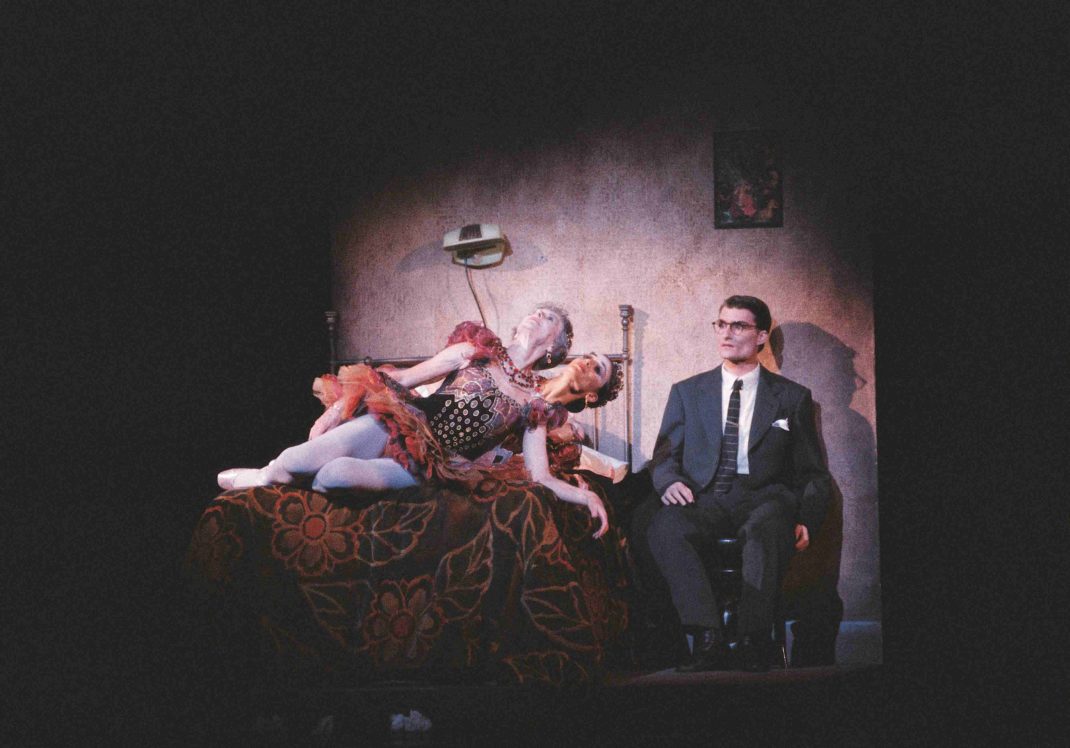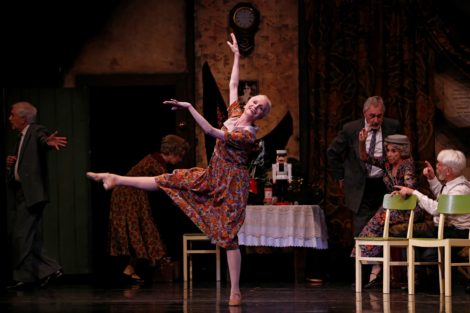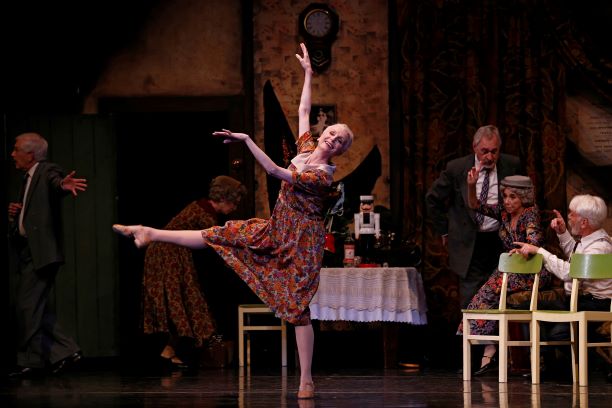I have to admit to disliking intensely the dumbing down of Graeme Murphy’s Nutcracker: The story of Clara with the ridiculous description of it as ‘The Gum-Nutcracker.’ The work might have strong Australian resonances, but it is much more than a story about early developments in Australian ballet. The so-called ‘affectionate dubbing’ of it with reference to the fruit of the eucalyptus tree makes the work sound pathetic. Below are a few published comments that suggest that we should grow up and resist the temptation to trivialise.
Speaking of the slight nature of, and problematic issues surrounding the more traditional productions of Nutcracker (going right back to 1892), Professor Rodney Stenning Edgecombe writes:
‘When foundations are sandy, it’s better to re-lay them in concrete. And that is indeed what the brilliant Graeme Murphy has done in his version of the ballet, which, having subtitled The Story of Clara, he conceives it, as Bournonville did his ballets, as ‘frames around the biographical and travel pictures which constitute [an] actual theatre life’.
He then proceeds to analyse the ballet, its story, its choreography, its music, and its place within the history of ballet (not necessarily Australian ballet), in the most erudite terms, making reference to, and using quotations from some of the great names of world scholarship—August Bournonville, T. S. Eliot, E. M. Forster, Marcel Proust, William Shakespeare, Percy Bysshe Shelley, Patrick White, and others. Speaking about the Snowflakes scene, for example, he writes:
‘The snowflakes’ wild pirouettes with upflung arms … show how inventively Murphy can work within restrictive confines of the danse d’école. Indeed one can’t help thinking that the writing for this ensemble is deliberately transitional, Petipa Duncanised as it were. And because ‘Petipa Duncanised’ is all but a synonym for ‘Fokine’—at least the Fokine of Les Sylphides—this episode illustrates the transformation that the very art of ballet witnessed during Clara’s childhood.’
What thrills me is that Edgecombe treats the work as an artistic creation of the highest order, one that deserves to be interpreted within the widest cultural context, not as some Snugglepot and Cuddlepie story (with apologies to May Gibbs). In his final paragraph, after discussing some issues he has with Marius Petipa’s work, and a similar issue he sees relating to the way Murphy has used a section of the music, Edgecombe says:
‘And what one allows to Petipa, one must allow to Murphy, a choreographer, in my opinion, of entirely comparable genius.’1

I am aware that not everyone will relate to the way Edgecombe writes and analyses but, like Edgecombe, Dame Margaret Scott, who danced Clara the Elder in 1992, 1994 and 2000, also speaks of the slight nature of traditional productions and recognises the extent to which Murphy’s ballet recontextualises the traditional work into something with more narrative and choreographic depth. In an interview in 2000, in which she replies to a question about why some found the Murphy production hard to accept, Dame Margaret says:
‘In the crits in the 1892 production, there was one critic who said, ‘It’s a pity that [such] fine music is expended on nonsense unworthy of attention.’ And in the 1992 production here, one of the crits said: ‘One of the great achievements of this production is that Tchaikovsky’s music sounds as if it was written to a brief from Murphy.
And then it goes on about the ballet itself. In 1892 the crit said, ‘Ballet is sliding downhill having lost its footing and moving away towards some kind of fragile and sugary Nutcracker.’ And then in Australia, ‘With Nutcracker the Australian Ballet came of age.’ I juxtaposed those two because it is relevant to the production.
I think if it had been called from the beginning, The Story of Clara, they would have accepted it. But it’s difficult to change the traditionalists. They still want the tutu ballet. And I mean, people don’t realise that the history of Nutcracker itself is a very chequered one. It only came into this popularity when the pantomimes died and it took the place of pantomimes because of its Christmas story. It became the cash cow, the Christmas entertainment. So to say it is popular because of a great love [is wrong] because a lot of people find it very dissatisfying.’2
It is common knowledge that Murphy was at first hesitant to accept the commission from Maina Gielgud to create a new Nutcracker. In an interview in 1996 he says:
‘Maina Gielgud had asked me years ago to think about doing a Nutcracker and I’d rejected the idea on the basis that the story was silly, the piece was clichéd, and I’d never really seen one I liked.’
But, thankfully, he eventually did accept the commission. He explains:
‘The clinch for me was the music, which I adore. So Kristian [Fredrikson] came over and we played the tape and I think somewhere in the course of that listening I was going ‘I can’t do a Nutcracker set in a postcard snowland, white Christmases and all that stuff. It doesn’t really mean anything. Maybe if you could do a Nutcracker set in arid Melbourne suburbia …’ And that was really the beginning of it.’3
What we have with Murphy’s visionary production should be regarded, especially by those who write media notes, as a ballet of international reach. Save gumnuts for other less sophisticated things. But if some see a need to dumb down the work with a crazy name (in order to attract more people and bring in more money?) then perhaps they should rename the Australian Ballet the Ocker Ballet?
Michelle Potter, 17 June 2017
References
- All quotes from Professor Edgecombe are from Rodney Stenning Edgecombe, ‘Graeme Murphy’s Nutcracker.’ Brolga, 17 (December 2002), pp. 23–32.
- Lee Christofis, ‘Coming of age. Retrieving history with Dame Margaret Scott and Valrene Tweedie OAM.’ Brolga, 13 (December 2000), pp. 44–58.
- All quotes from Murphy are from ‘Graeme Murphy. Humanity revealed’ in Michelle Potter, A passion for dance (Canberra: National Library of Australia, 1997), pp. 61–77.
See also the text of a program article I wrote for the Australian Ballet’s 2009 season of Nutcracker. The story of Clara. As a concluding remark I wrote, ‘This is a Nutcracker to be loved and cherished. Its Australian connections are heart warming and a source of pride and pleasure. But the dramatic text is universal.‘ Here is the link.
Featured image: Chrissa Keramidas as Clara the Elder in Nutcracker: The story of Clara. The Australian Ballet, 2017. Photo: © Jeff Busby

